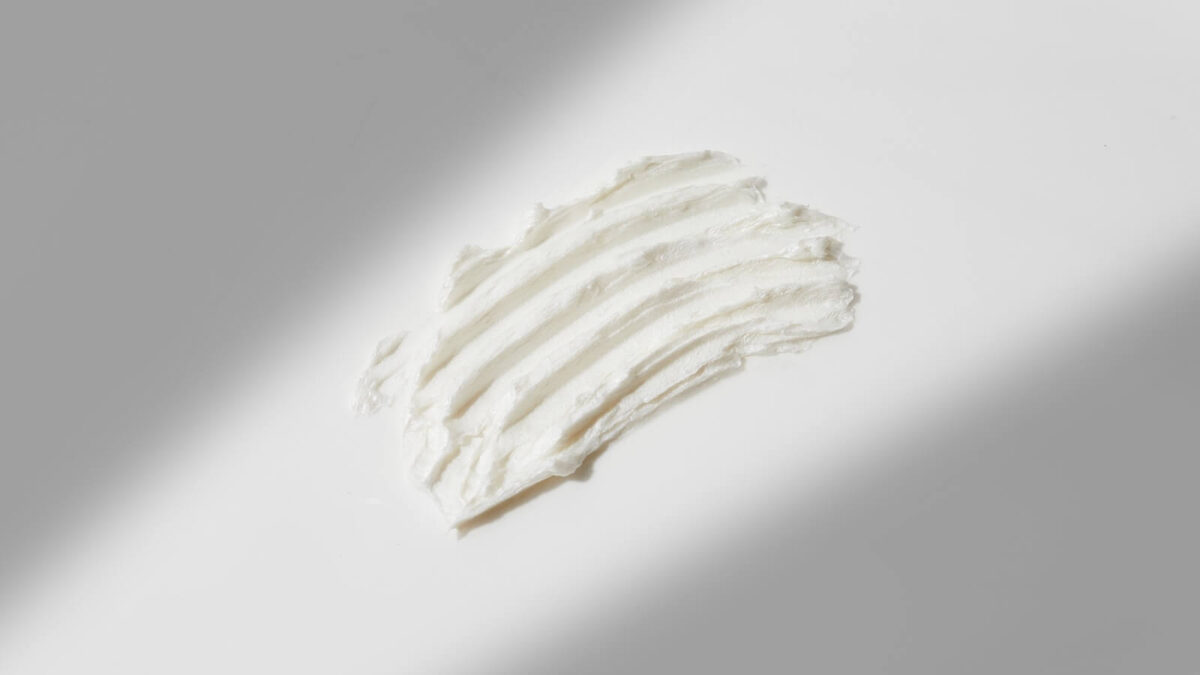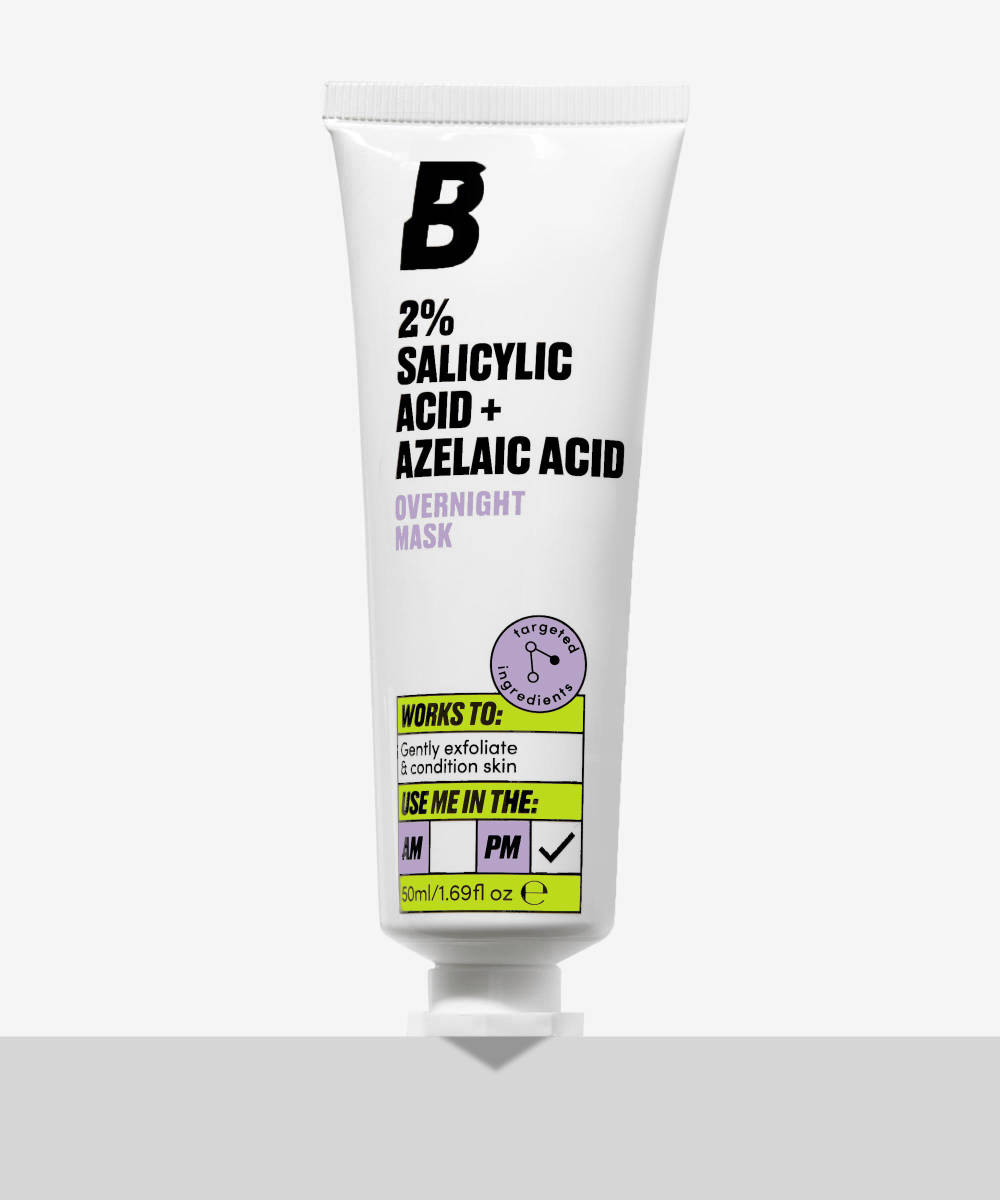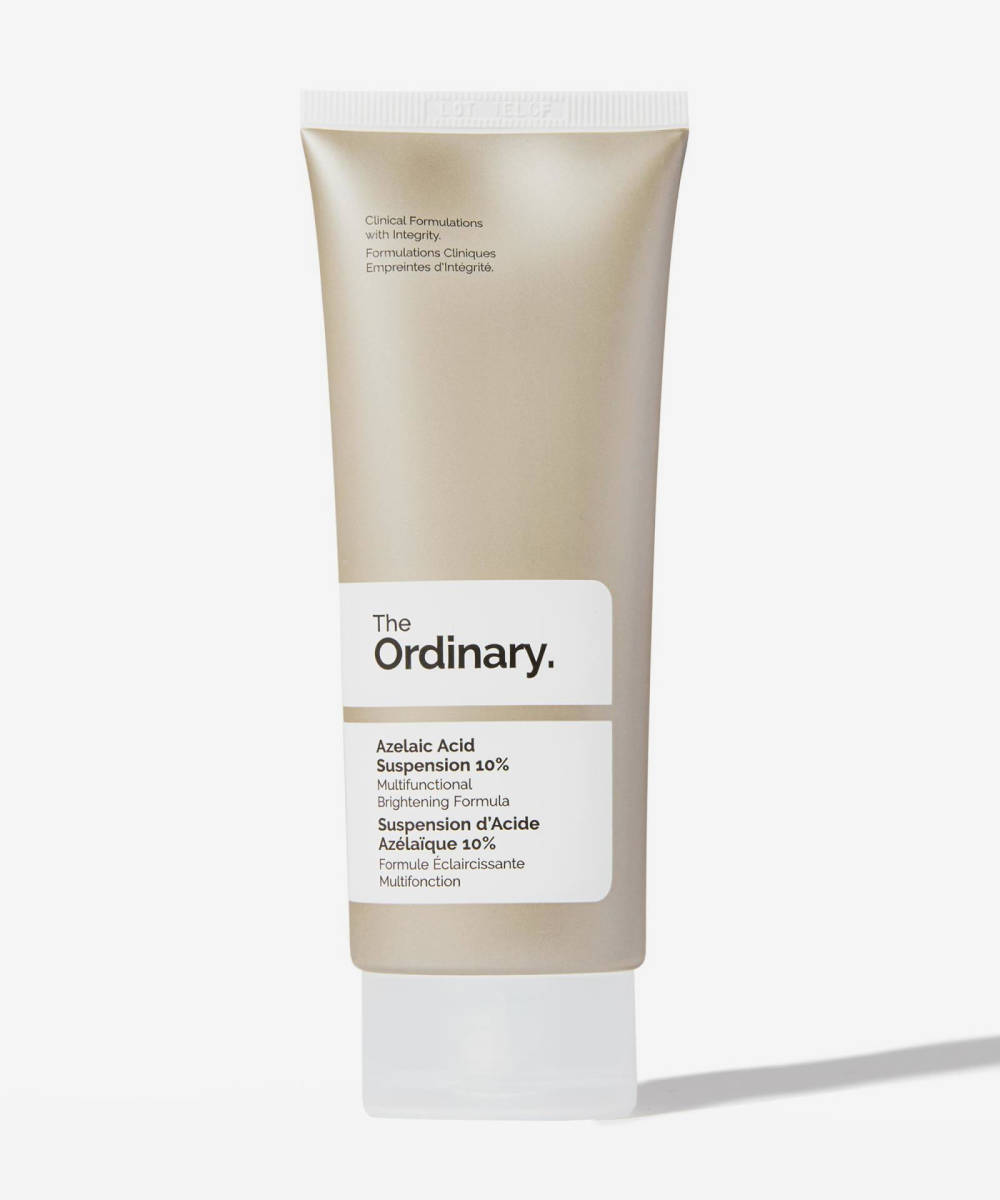Azelaic acid doesn’t get the attention it deserves. We get it, there are so many fantastic skincare ingredients out there, it’s hard to know what’s really doing its job well. For a lot of people (me included), azelaic acid is the jack of all trades and master of many. It’s great at busting breakouts — especially the kind that come with papulopustular rosacea — calming inflammation, reducing hyperpigmentation, exfoliating the complexion, and overall does an excellent job at brightening the skin.
There are a few things you probably want to know before diving in, or perhaps you want to brush up your knowledge on this expert-approved ingredient. In this guide, we’ll answer: how does azelaic acid work? Who should use it? And which acids can you mix it with? Then you can shop for some of our favourite azelaic acid skincare products.
What is azelaic acid?
Azelaic acid is a naturally occurring dicarboxylic acid that’s actually produced by yeast on the skin. It’s also found in grains such as wheat, barley, and rye, but is often created synthetically in a lab for stability reasons when it comes to skincare products. This also makes it safe for those with coeliac disease or gluten sensitivities. Although, a lot of experts agree that grain-derived azelaic acid in skincare contains such a small dose that it shouldn’t trigger a reaction. It’s used to reduce minor acne, reduce congestion, calm inflammation and treat rosacea — to name a few.
It typically comes in a cream or gel treatment (sometimes prescription for higher strengths), but can also be found in serums and masks.
How does it work?
It works similarly to many other skincare acids in that its primary aim is exfoliation, however it doesn’t work in the same way as AHAs or PHAs. Azelaic acid is a keratolytic, which essentially means that it breaks down excess keratin in the skin. In turn, this speeds up shedding of skin cells and results in reduced breakouts, rosacea symptoms, and reveals brighter skin.
Aside from its expert exfoliating abilities, the reason azelaic acid is so well-loved is due to its gentle nature (when compared with many other skincare acids) and abilities to act as an antibacterial and anti-inflammatory. This means that whilst preventing breakouts from occuring due to the keratolytic process and antibacterial benefits, it’s also calming existing spots and rosacea.
If that wasn’t enough, it’s also excellent for hyperpigmentation. Azelaic acid inhibits tyrosinase, the enzyme responsible for causing pigment production, often leading to those post-breakout marks and brown spots. Therefore, it’s an excellent product for treating and preventing hyperpigmentation. In short: it’s truly doing the most for our skin.
Why should I use it?
There are very few people who shouldn’t use it, making it such a great all-rounder. It’s excellent for blemishes, rosacea, congestion, hyperpigmentation, and generally angry skin in need of some attention. Unless you’ve been advised not to, have previously reacted badly to it, or have open wounds or highly sensitised skin, you should see benefits from using azelaic acid.
It can be combined with other exfoliating acids, which is encouraged if the azelaic acid isn’t prescription-strength. Often AHAs, BHAs, and retinol are recommended alongside azelaic acid to see additional benefits like increased cell turnover, classic exfoliation, and improving skin texture.
As always though, proceed with caution if you mix and match acids yourself. If you’re unsure, try products that are formulated with various ingredients together. This is especially true if you have a condition like rosacea where the benefits of using azelaic acid on its own often outweigh the potential irritation from other acids.
If you’re pregnant and want to avoid a lot of other acids and topical skin treatments, azelaic acid is recommended by many dermatologists as being safe for use.
When should I use it?
Azelaic acid is to be used either AM or PM (sometimes twice a day but this depends on your skin type) and is best used after cleansing and before moisturising. Always remember to follow up your morning routine with sunscreen. The trick with azelaic acid is making sure your skin is fully dry before applying, otherwise you risk some tingling, which is often what makes people avoid it altogether — despite being a totally avoidable side effect.
As with most skincare products, it’s a good idea to build up your skin’s tolerance to it; starting with once a week and increasing if your skin doesn’t kick up a fuss.
Try these…
If you’re loving the benefits of azelaic acid but want a little extra oomph, try this overnight mask which incorporates salicylic acid into the mix, too. The benefits of both mean banishing breakouts and congestion, whilst minimising appearance of pores and fine lines.
The Ordinary knows how to create an affordable, science-backed product that delivers — there’s a reason it’s got over 300 5-star reviews. It works to target existing blemishes and dark marks, whilst also preventing further breakouts and pigmentation from occurring. The light gel texture makes it a fantastic option for all skin types (yes, even sensitive skin!) and easy to incorporate into your routine.



